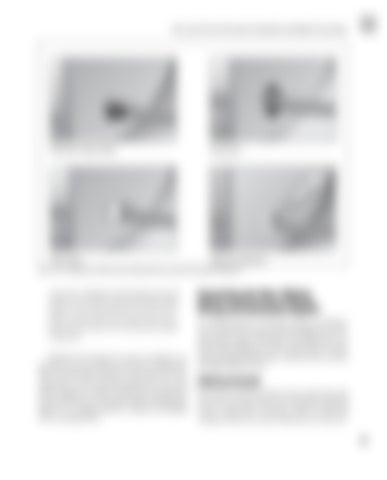Wire and Circuit Protection Standards and Repair Procedures
Electrical Tape Wrap
Grommet
PVC Pipe
Silicone Adhesive
Fig. 4-20. Acceptable methods of providing abrasion protection through bulkheads.
connections. Sealing heat-shrink tubing works well in these cases. (See the circuit-repair section of this chapter.) All wiring should be routed at least 2 inches (50.8 mm) from wet-exhaust-system components and 9 inches (22.9 cm) from dry-exhaust components.
Methods of securing wire can be as simple as using nylon wire ties with screw holes for attachment. The recommended method of securing wires running above or near moving machinery is to use the plastic-dipped or rubber-insulated metal fasteners commonly found on standard engine installations. Figure 4-21 on page 60 shows a variety of acceptable wire-securing devices.
Connecting the Dots: Making Wiring and Connection Repairs In making repairs to existing wiring or building a new circuit for the latest electrical appliance you’ve purchased, proper techniques and components can make all the difference in the world when it comes to preventing problems later. Take the time to do the job right and do it once.
Soldering Terminals Over the years there has been some controversy and discussion among electricians regarding soldering versus crimp-type connectors used in electrical wiring on boats. For years I labored over each con59


































